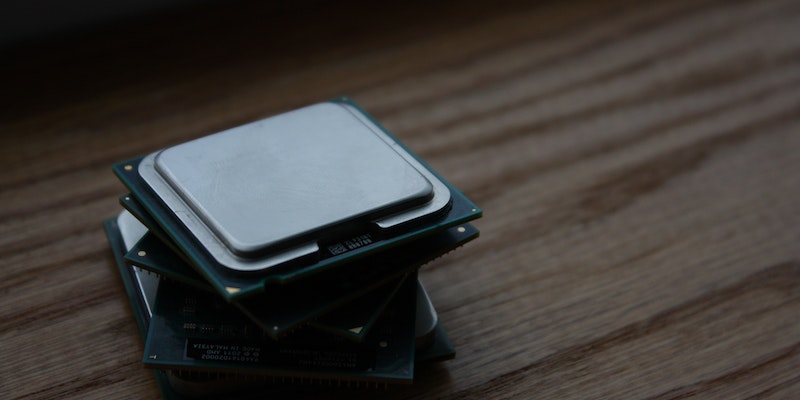In a bid to stay competitive in the ever-evolving CPU market, Intel is set to reintroduce its Raptor Lake CPU family as part of a refresh under the 14th Gen branding in 2023. This move is aimed at tackling the rising popularity of AMD Ryzen 7000 CPUs, particularly the newer X3D parts that have been garnering endorsements within the gaming segment due to their impressive performance, pricing, and efficiency. Let’s delve into the details of the revamped Intel 14th Gen Raptor Lake Refresh CPUs to see if they can hold their ground.
Update Details: Mainly a clock speed increase update with similar core configurations
With the launch of the 14th Gen Raptor Lake Refresh CPUs, Intel appears to have adopted a clock lift update strategy, akin to what they have done in the past. Essentially, this means that while the lineup mostly retains the same core configurations, there will be a modest boost in clock speed. Although it’s not a revolutionary leap, a +200 MHz increase in clock speed can still lead to noticeable performance improvements.
Clock Speed Improvement: Expect a 200 MHz increase in clock speed
One of the key upgrades in the Intel 14th Gen Raptor Lake Refresh CPUs is the significant bump in clock speed. While a +200 MHz increase might not seem groundbreaking, it is in line with what we would typically expect from a refresh. The higher clock speeds should provide a tangible boost in performance for various tasks, including gaming, content creation, and multitasking.
Competition with AMD Ryzen 7000 CPUs: Can Intel regain its footing?
Intel’s main goal with the 14th Gen Raptor Lake Refresh CPUs is to take on the AMD Ryzen 7000 CPUs head-on, specifically targeting the newer X3D parts that have been gaining traction in the gaming community. By amplifying clock speeds, Intel aims to close the performance gap and offer a compelling alternative to AMD’s offerings. However, it’s worth noting that while the clock speed boost provides some extra performance, Intel has not introduced any new technologies like a new process or 3D V-Cache tech, which may limit their ability to fully compete.
Performance Trade-off: Increased performance at a thermal and power cost
While the increased clock speeds in the Intel 14th Gen Raptor Lake Refresh CPUs provide a welcome performance boost, there is a trade-off to consider. Intel’s decision to focus solely on clock speed without implementing new technologies means that the improved performance comes at a thermal and power cost. Users should be aware of the potential for higher temperatures and increased power consumption, which may impact overall system efficiency, especially in situations where thermals are already a concern.
Overview: Exploring the offerings of Intel’s 14th Gen Raptor Lake Refresh CPUs
As we delve into the realm of Intel’s 14th Gen Raptor Lake Refresh CPUs, it’s essential to understand what they bring to the table. The lineup, primarily a clock lift update, retains the same core configurations, with the notable exception of one SKU. Intel’s focus here seems to be on refining their existing architecture while delivering a tangible performance boost.
Expected features: Same architecture as Raptor Lake with Raptor Cove P-Cores and Gracemont E-Cores
The Intel 14th Gen Raptor Lake Refresh CPUs will retain the same architecture as the previous Raptor Lake lineup, featuring a combination of Raptor Cove P-Cores and Gracemont E-Cores. This architecture aims to strike a balance between high-performance tasks executed by the primary cores and power-efficient operations handled by the smaller efficiency cores. While this architecture may not be entirely groundbreaking, it provides a solid foundation for delivering reliable performance across a range of applications.
DDR5 Memory Support: Compatibility with faster DDR5 memory DIMMs
In line with technological advancements, the 14th Gen Raptor Lake Refresh CPUs will support faster DDR5 memory DIMMs. This means that users can take advantage of the improved data rates and bandwidth offered by DDR5 memory to further enhance system performance. The transition to DDR5 memory is expected to bring numerous benefits, such as increased memory capacity, lower power consumption, and improved overall system responsiveness.
Motherboard Compatibility: Compatible with existing LGA 1700/1800 socket motherboards
To ease the upgrade process for users, Intel has ensured that the 14th Gen Raptor Lake Refresh CPUs will be compatible with existing LGA 1700/1800 socket motherboards. This means that users will not necessarily have to invest in a new motherboard to enjoy the benefits of the refreshed lineup. Compatibility with existing motherboards helps make the transition smoother and more cost-effective for users looking to upgrade their systems.
As Intel reintroduces its Raptor Lake CPU family through the 14th Gen Raptor Lake Refresh CPUs, the company is determined to regain its footing in the face of stiff competition from AMD. The clock lift update, though not a groundbreaking leap, provides a noticeable performance boost. However, it’s important to consider the thermal and power implications of this strategy. By offering compatibility with existing motherboards and supporting faster DDR5 memory, Intel aims to enhance the user experience and provide a compelling option for those seeking an upgrade. Only time will tell if the 14th Gen Raptor Lake Refresh CPUs can deliver on their promises and revitalize Intel’s position in the CPU market.

